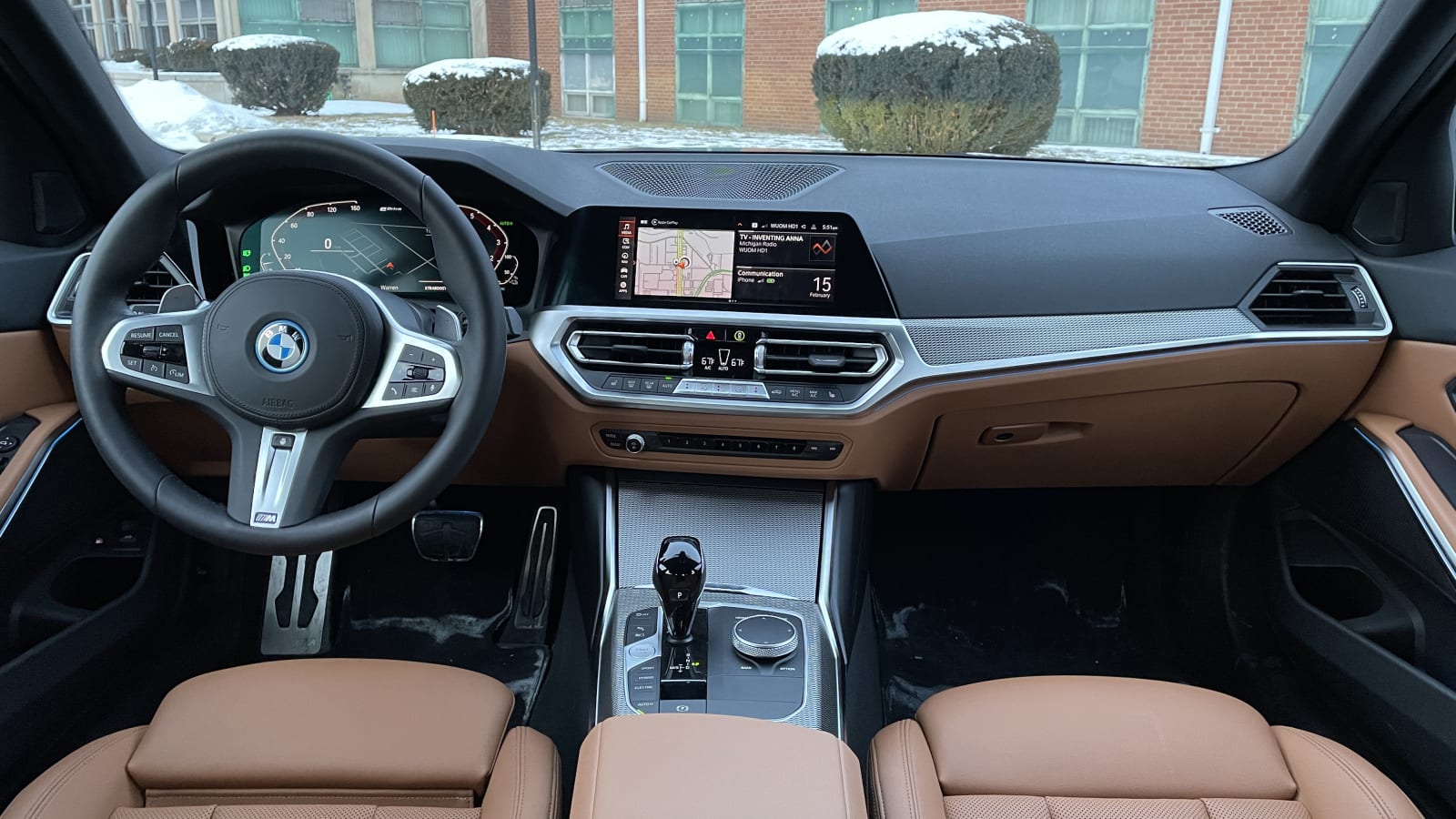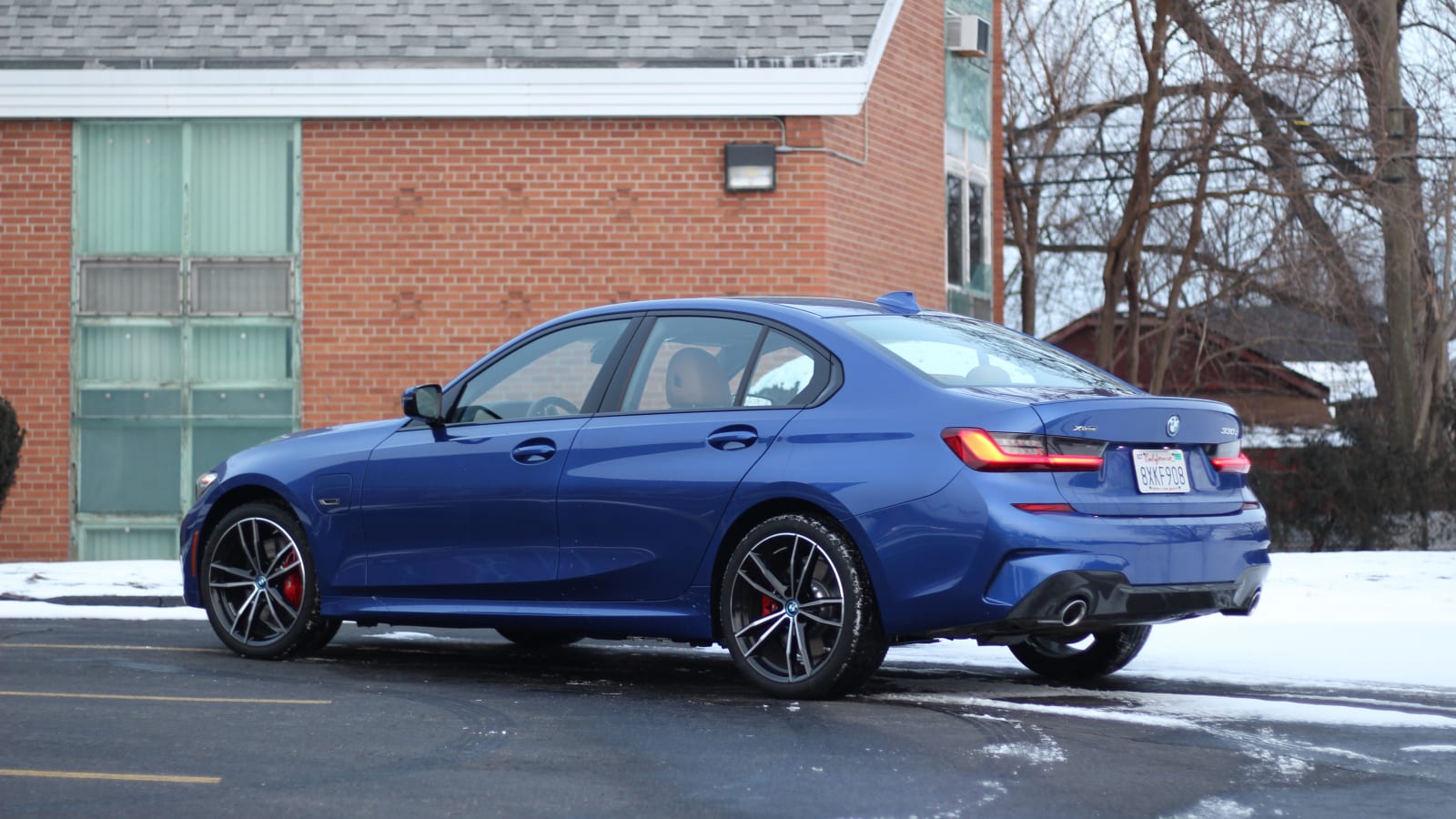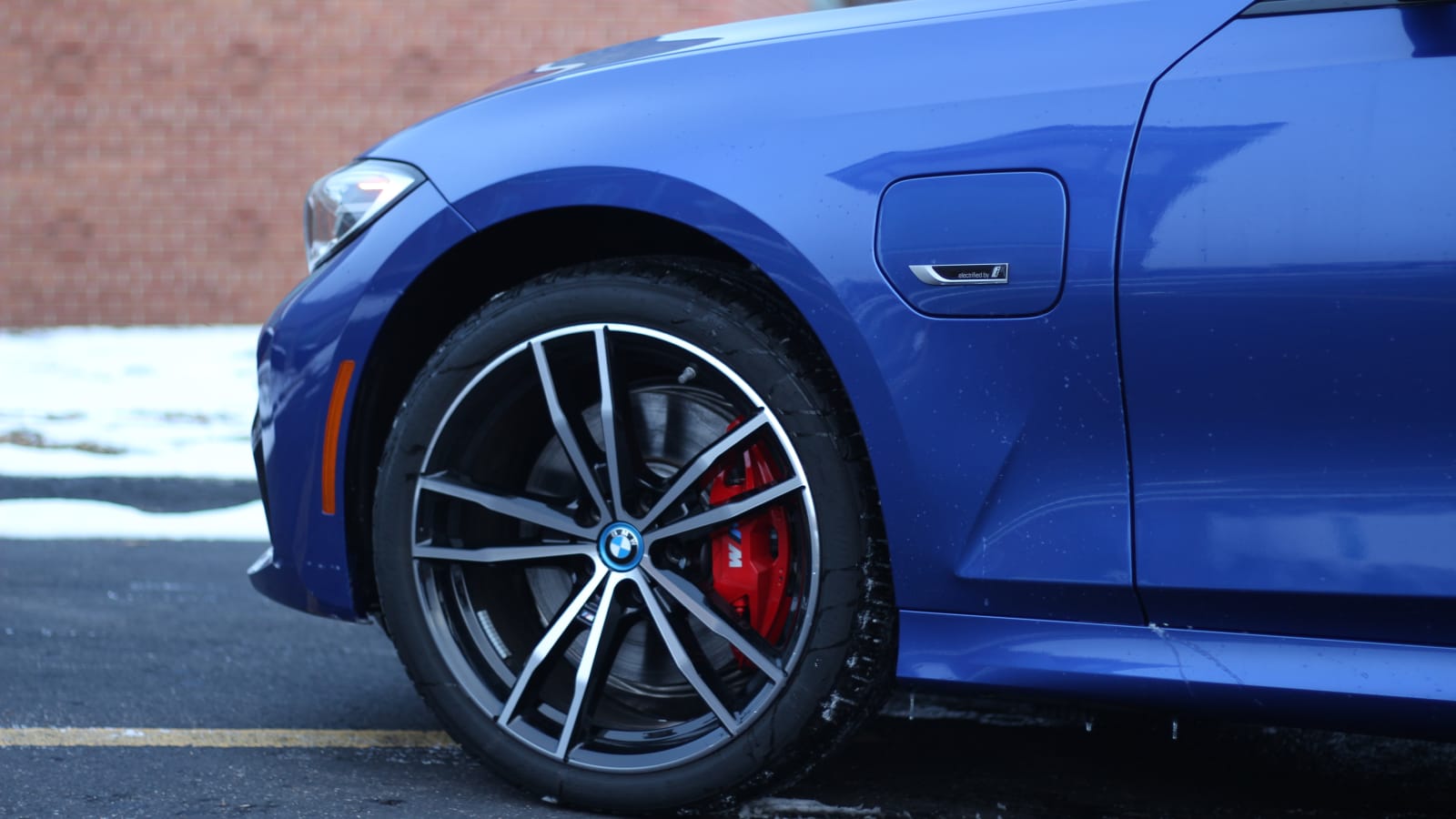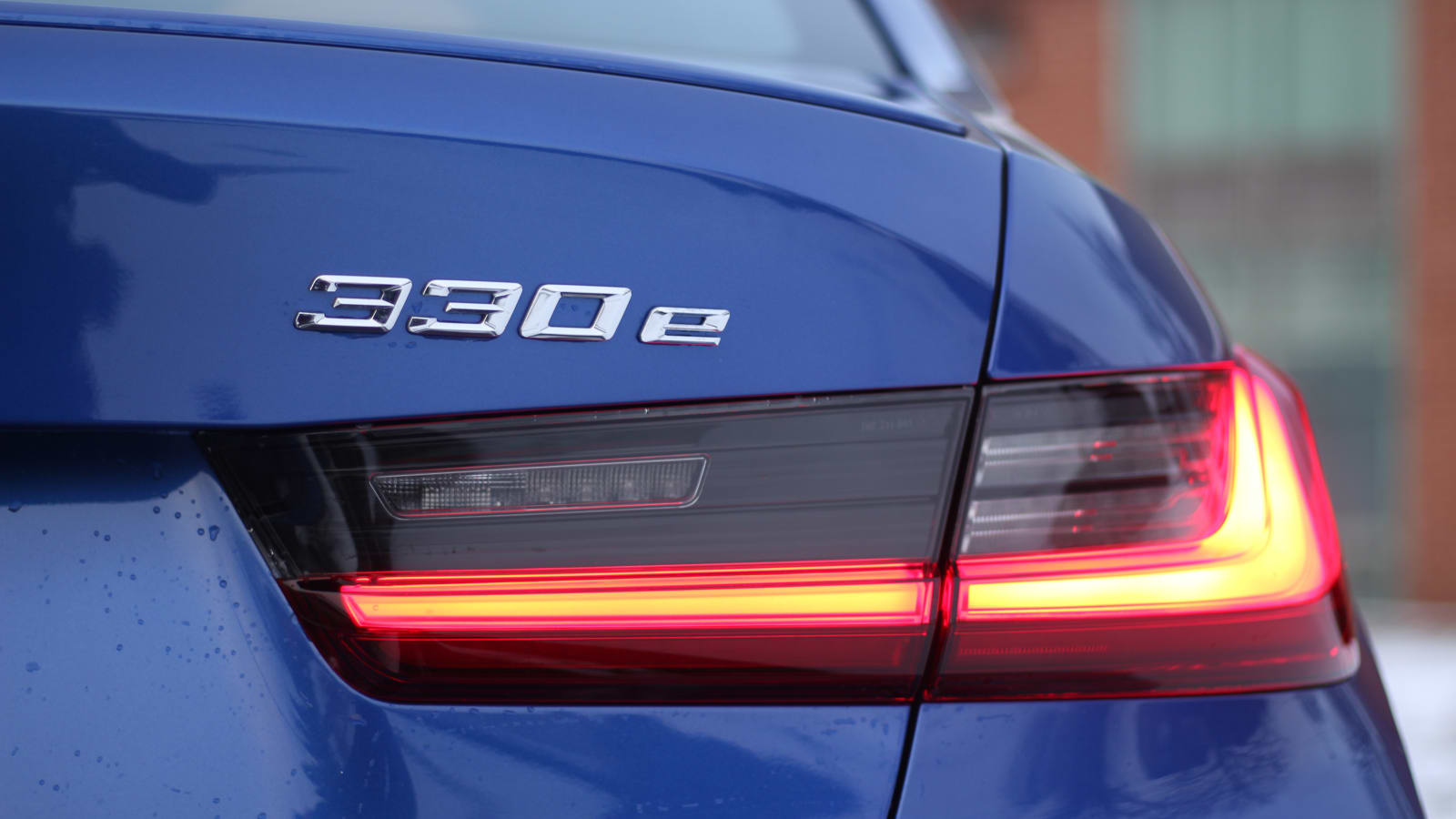Say hello to our new long-term test car: a 2022 BMW 330e xDrive. Yes, we’re going to be living with a 3 Series for a year, but this one has an electric twist. The “e” in its name denotes that this 3 Series is the plug-in hybrid version of the four-door sedan, so in addition to the 2.0-liter turbocharged four-cylinder under the hood, this BMW has an electric motor that is fed by a lithium-ion battery pack.
While full battery electric vehicles are the solution for many folks, there’s still plenty of merit to owning a PHEV that offers the benefits of traditional gasoline engine motoring while still letting you dip your toes into the electric lifestyle. And just as EVs have proven time and again, going for a PHEV does not automatically mean boring or slow. That’s one of the reasons we went for the 3 Series, as it’s neither of those things.
The boosted four-cylinder makes a respectable 181 horsepower and 258 pound-feet of torque on its own. Combined with the electric motor — which individually makes 107 hp and 77 lb-ft of torque — total system output is 288 horsepower and 310 pound-feet of torque. For those comparing, both those figures are higher than what the standard 330i is capable of. However, there’s a caveat. That high 288 horsepower figure is only achievable using the XtraBoost feature that is only activated in Sport mode with a full-throttle application. Just like other 3 Series models, this one sports an eight-speed automatic transmission to handle shifting duties.
As for the electric side of this equation, a 12.0 kWh battery pack located under the rear seats provides energy to the electric motor. Fully charged, the 330e xDrive is EPA-rated for 20 miles of electric-only driving. Top speed under electric power is 87 mph.
Why we got it
Whenever there’s a new 3 Series, it’s worth an extra-long look. Even if it might not be the most engaging or driver-focused sport sedan out there anymore, it’s still a measuring stick by which every other four-door luxury sedan is measured by. And yes, this generation of 3 Series is a couple years old now, but that doesn’t make it any less important in this highly competitive segment.
Beyond deciding whether this generation of 3 Series is a step forward in the right direction for being fun to drive, we want to find out if opting for its 330e plug-in hybrid variant can improve the sport sedan experience beyond the standard gasoline engine model. If you buy a 3 Series, it’s very likely for daily driving duty. That means trips back and forth to the office, runs to the grocery store, road trips to family and so on. It gets used for everything, and the vast majority of those drives are probably covering less distance than the 20 miles of range afforded by a full battery pack in the 330e. This should theoretically lead to fewer trips to the gas station and less money spent on fuel throughout our year of driving. We’ll be reporting our findings.
What we got
The BMW configurator is a scary one. If you don’t watch yourself, the price of your BMW can quickly skyrocket by $15,000 or more after ticking desirable option boxes. Typically, the BMWs that show up to our doorsteps for testing are loaded to the gills. But that’s not the case with our long-term test car.
From a base price of $45,945, our 330e xDrive’s final price is just $51,840, including the $995 destination charge. If you’re eligible, the 330e comes with a stout $5,836 tax credit, too, bringing the effective owner’s cost down to approximately $46,000 — that’s just about $50 off the car’s base price! If you live in a state where there are incentives on top of the federal credit, the deal only gets sweeter.
The above said, let’s dive into what options our 330e xDrive does and does not have. To begin, this is the xDrive all-wheel-drive model, not the available rear-drive version. We’re happy to have power to all four wheels for Michigan’s winter, which means paying $2,000 for xDrive over the standard model. And don’t worry, we’re still going to test it with a set of new Nokian winter tires, so this 330e xDrive should be nearly unstoppable in the snow.
The most expensive line item in the options list is the M Sport Package for $3,400 that adds the flashy 19-inch bi-color wheels, darkened exterior trim all around, LED fog lights, an anthracite headliner, aluminum interior trim and the M steering wheel. Next most expensive is the Premium Package for $1,600 that adds keyless entry, heated front seats, a heated steering wheel, lumbar support, head-up display and BMW’s Gesture Controls for the infotainment system. The last big package on the car is the $700 Driving Assistance Package. This adds BMW’s Active Driving Assistant that consists of front collision warning and automatic emergency braking with pedestrian detection. The package also bundles blind spot warning, lane departure warning and front/rear parking sensors in for your $700. What it does not consist of is adaptive cruise control and BMW’s advanced lane-centering system.
One option we didn’t get is BMW’s $1,400 Dynamic Handling Package. This package adds an Adaptive M Suspension, a variable sport steering rack and M Sport brakes. We’ve yet to drive a 3 Series of this generation with the standard passive suspension, and we’re weirdly geeked to do so. That said, this car is equipped with M Sport brakes that were a no-charge option.
Appearance-wise, our 330e is painted in pretty Portimao Blue Metallic for a modest $550. Its calipers are painted red and complement the blue paint — those big 19-inch wheels do a good job of showing off the color within. The interior is Cognac (dark tan), and it’s BMW’s perforated SensaTec, not the optional Vernasca leather that would have raised the price by another $1,450.
Follow along with us as we test this plug-in hybrid 3 Series for a year. As of this publishing, we’ve just made it through the long 1,200-mile break-in period, so we’ll have proper driving impressions for you soon.
Related video:
Source: www.autoblog.com






